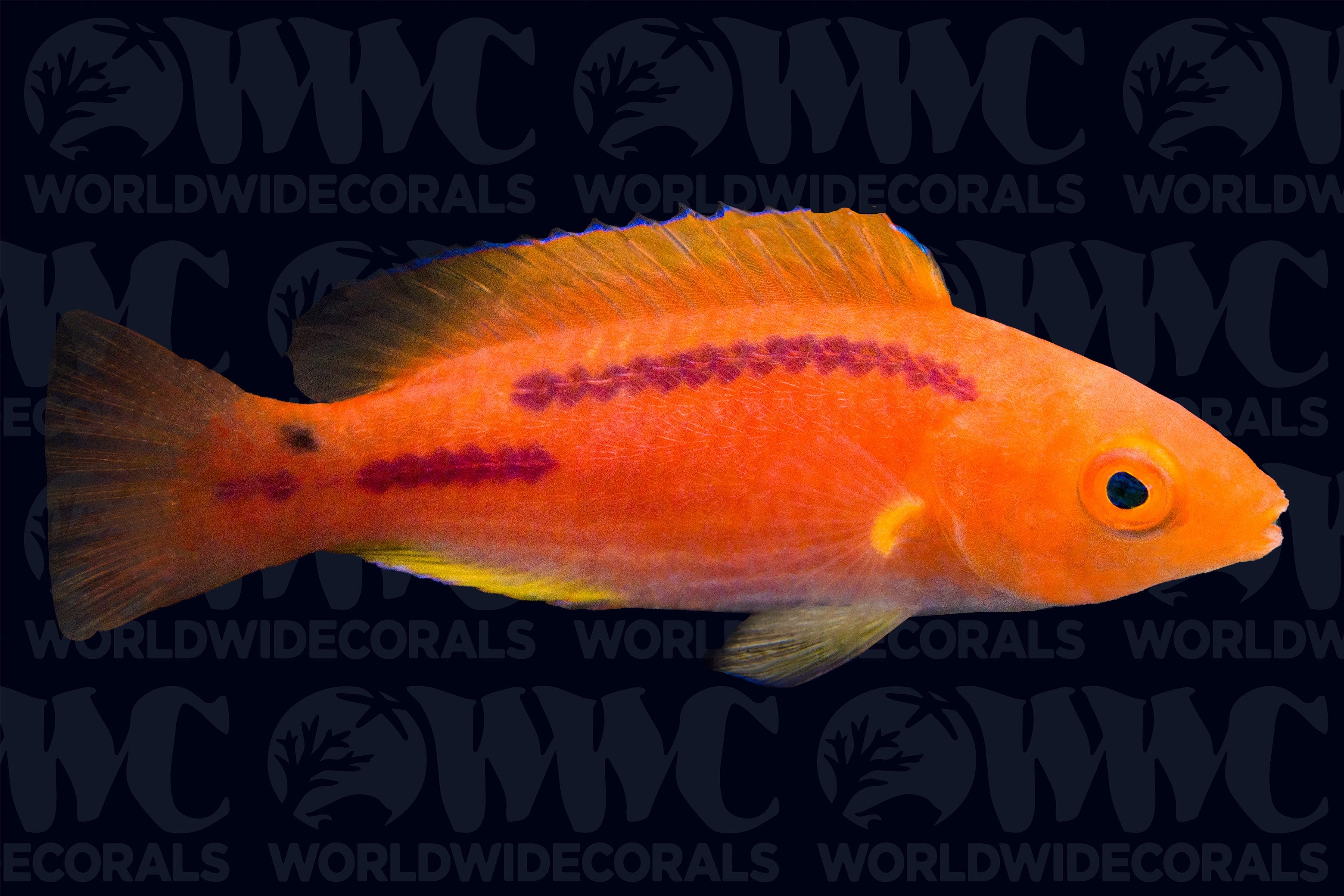Description
Cirrhilabrus lubbocki
The Multicolor Lubbocks Wrasse is a colorful and hardy reef-safe species admired for its playful nature and beautiful blend of pink, orange, and violet hues, making it a favorite among saltwater aquarium enthusiasts. Males are typically larger and more colorful than females. These wrasses thrive in aquariums with ample rockwork that offers hiding spots such as caves and crevices. Unlike many wrasses, they do not bury themselves in the sand at night. Instead, they either wedge into rock crevices or form a mucus cocoon—similar to parrotfish—for protection while sleeping. The cocoon remnants do not affect water quality or aquarium inhabitants. A tight-fitting lid is recommended, as they may jump. Peaceful and reef-safe, Multicolor Lubbocks Wrasse are excellent additions to community aquariums. As carnivores, they require a varied diet of enriched meaty foods—like mysis shrimp, squid, clams, fish, or specialized carnivore preparations—fed at least twice daily. They can grow up to 3 inches and need a minimum aquarium size of 50 gallons. Native to the Indo-West Pacific, they are found from the Philippines to Indonesia typically near branching coral reefs at depths of up to 150 feet.
The Multicolor Lubbocks Wrasse is a colorful and hardy reef-safe species admired for its playful nature and beautiful blend of pink, orange, and violet hues, making it a favorite among saltwater aquarium enthusiasts. Males are typically larger and more colorful than females. These wrasses thrive in aquariums with ample rockwork that offers hiding spots such as caves and crevices. Unlike many wrasses, they do not bury themselves in the sand at night. Instead, they either wedge into rock crevices or form a mucus cocoon—similar to parrotfish—for protection while sleeping. The cocoon remnants do not affect water quality or aquarium inhabitants. A tight-fitting lid is recommended, as they may jump. Peaceful and reef-safe, Multicolor Lubbocks Wrasse are excellent additions to community aquariums. As carnivores, they require a varied diet of enriched meaty foods—like mysis shrimp, squid, clams, fish, or specialized carnivore preparations—fed at least twice daily. They can grow up to 3 inches and need a minimum aquarium size of 50 gallons. Native to the Indo-West Pacific, they are found from the Philippines to Indonesia typically near branching coral reefs at depths of up to 150 feet.
3 DAY GUARANTEE | Hassle Free | 100% Satisfaction | Online Orders Only


